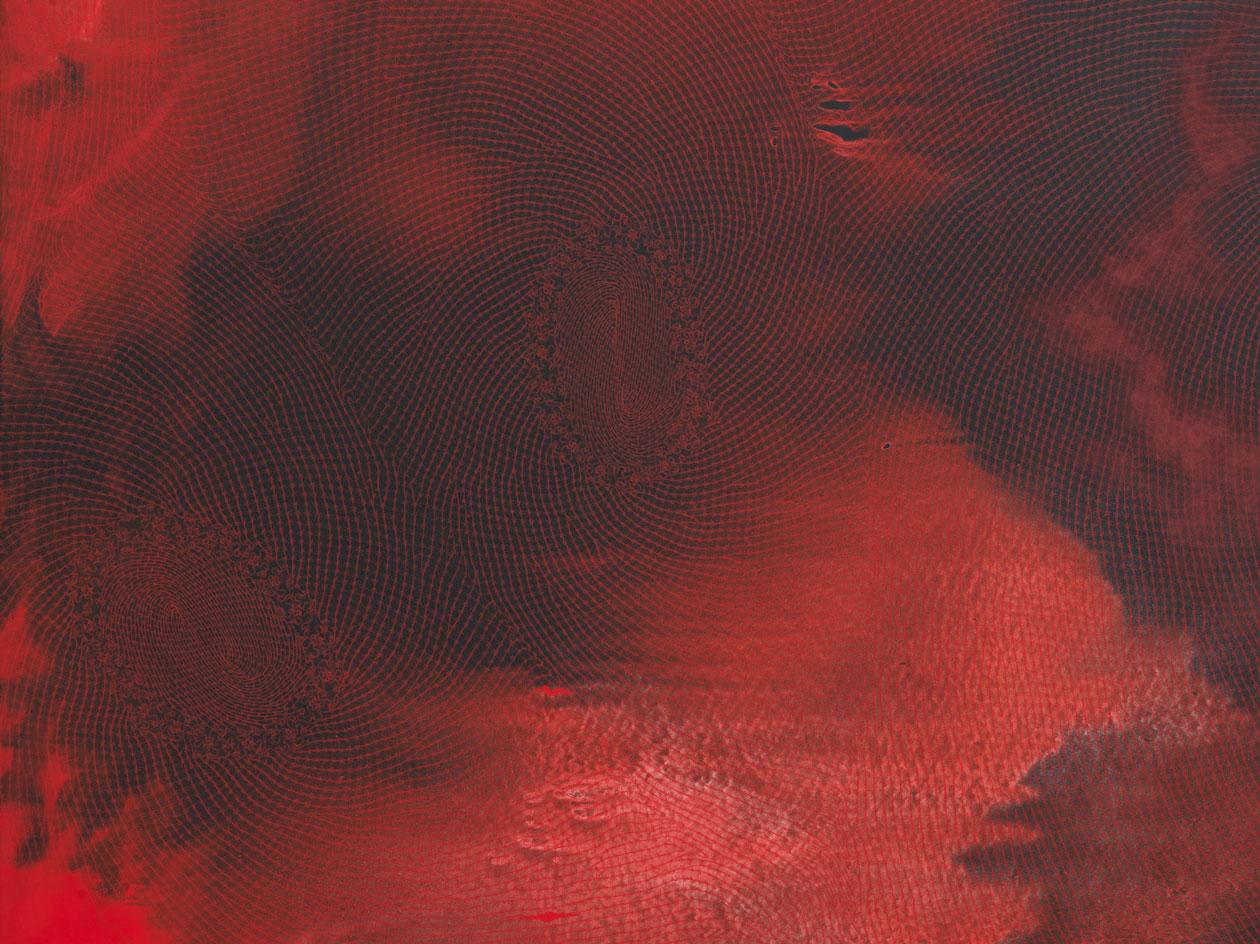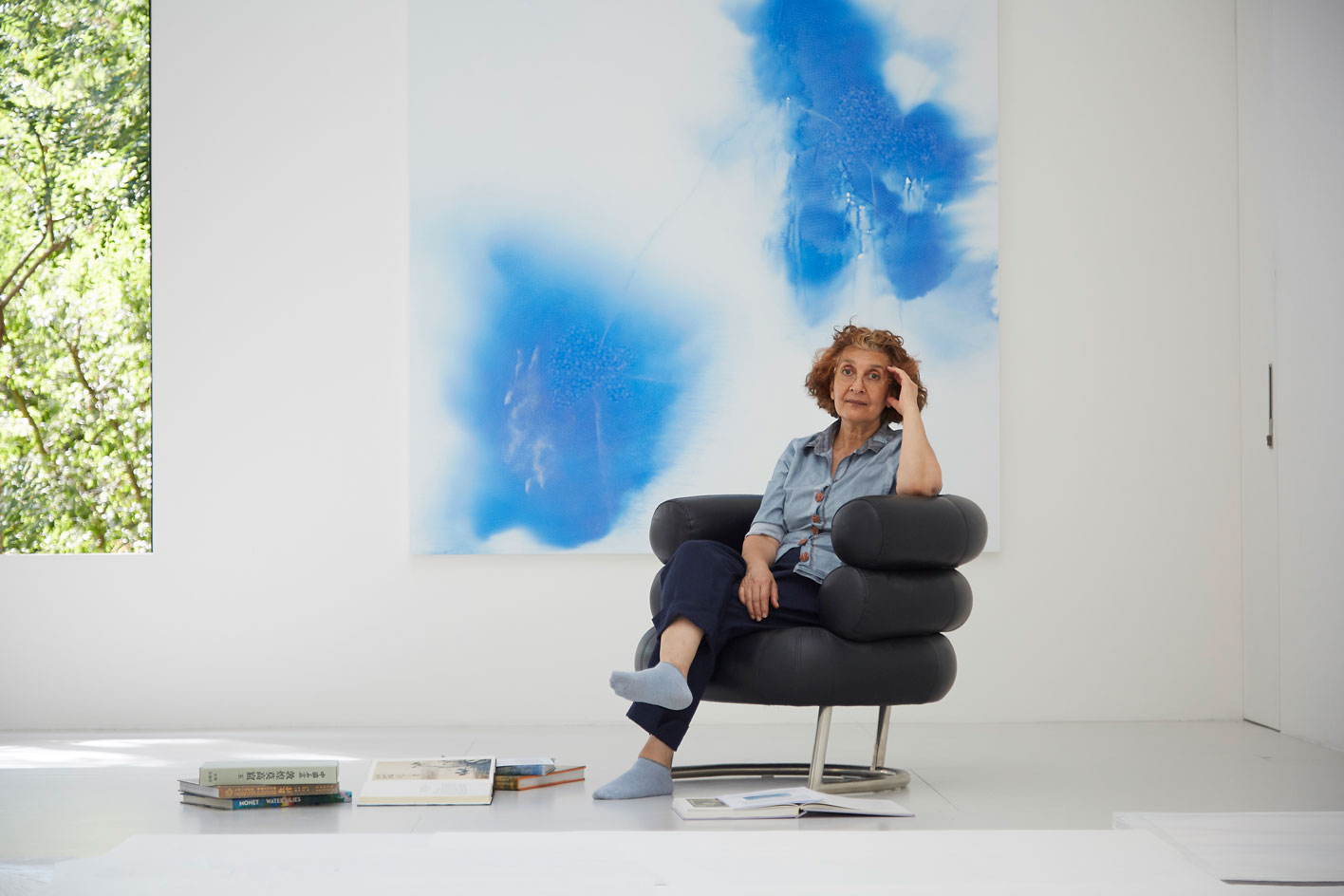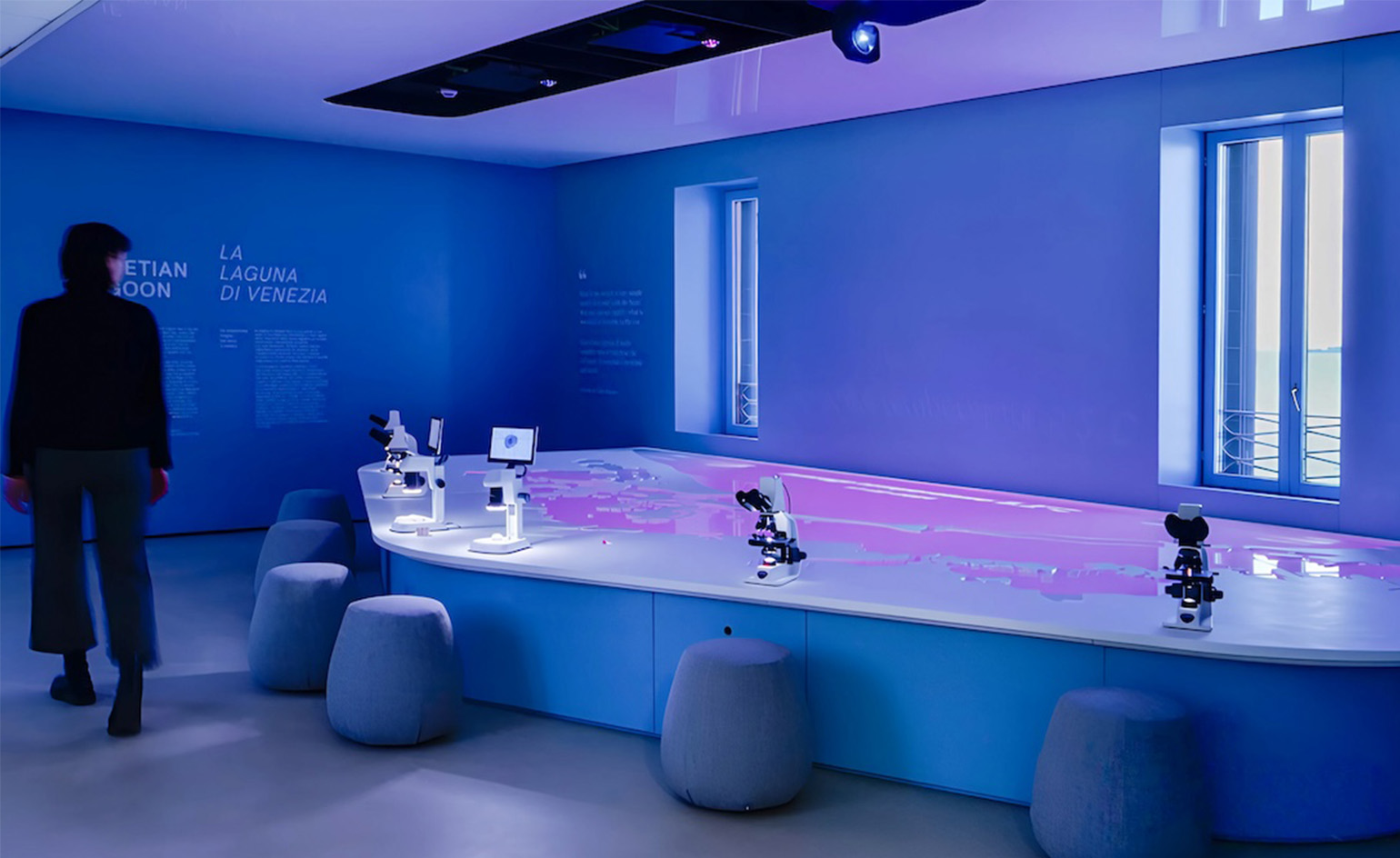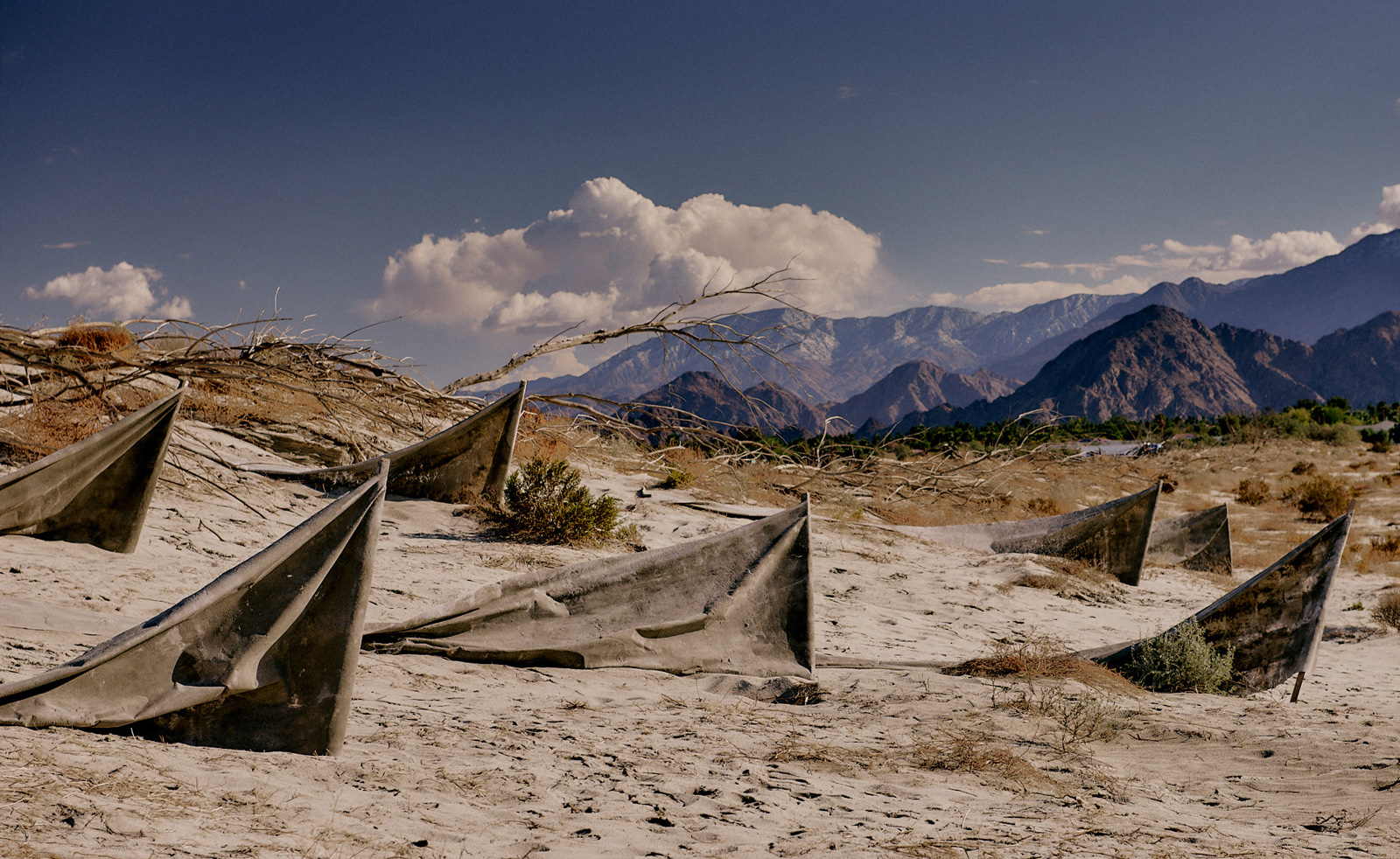Shirazeh Houshiary’s optical illusions transfix New York
Iranian artist Shirazeh Houshiary puts perceptions of time, space, and materiality through their paces in ‘A Thousand Folds’ at Lehmann Maupin New York

Shirazeh Houshiary’s ‘A Thousand Folds’ is a game of laws: the laws of nature and the laws of physics that underpin works that are laws unto themselves. It’s all contradiction and paradox: transparency and opacity, sound and silence, physicality and intangibility.
As the show’s title suggests, the London-based Iranian artist’s latest work explores the many folds of the artist’s practice and the thousand dimensions it occupies.
Houshiary’s work has the rare attribute of offering viewer’s two, very distinct experiences. For the first, it may be worth summoning on Rothko’s recipe for viewing his own abstract works: at a distance of 18 inches. At this proximity, Houshiary’s work is the cosmos in our field of vision: a universe of undulations, swirls and hypnotics. The second experience requires a closer inspection, through which viewers can absorb the true magnitude of meticulousness the artist has envisioned, which include a web of hidden Arabic phrases which translate as ‘I am’ and ‘I am not’ – Houshiary’s work creates ample intrigue and few conclusions.


Feel, 2019. Pigment, pencil, and black aquacryl on canvas and aluminum. Courtesy the artist and Lehmann Maupin, New York, Hong Kong, Seoul, and London
With each work, Houshiary attempts to make visual the intangible: an echo, a breath or a memory. The artist describes water as her collaborator. Her distinctive painting technique involves the successive layering of water, pigment, and line drawing, an intense method that often takes several months to complete. Through this process, the artist gives water the autonomy to express itself, movement is organic and free without being mastered by the artist’s hand.
Elsewhere, A powder-coated aluminium piece, The Order of Time, (2019) offers more plot twists. Polychromatic lines curve and weave in rhythmic loops. Elsewhere, her new digital animation A Cup and a Rose muses on 17th-century Spanish painter Francisco de Zurbarán’s still-life painting A Cup of Water and a Rose (1630) and set to a musical score by Estonian composer Arvo Pärt titled Cantus in Memoriam. ‘The cup breaks as the pressure of the water within it intensifies and the rose ages only to eventually pulverise as the cup shatters,’ says Houshiary. ‘This video installation echoes the theme of fragmentation and fission to reveal that space where infinity appears fleeting and vanishing only to revert to a plenitude of water and to appear as though all comes and goes again and again with no end to it.’

The Order of Time, 2019, powder-coated cast aluminium. Courtesy the artist and Lehmann Maupin, New York, Hong Kong, Seoul, and London
Emerging as if rooted in the floor are Houshiary’s dazzling and dynamic sculptures Aura and Twilight (2019), which see Murano glass bricks stacked in a spiralling helix. Each fragment echoes the original shape at its footprint with precision, in this case, a seedpod incrementally rotated to the maximum degree the form will allow before the structure reaches instability – just another example of Houshiary pushing materiality, and viewers’ optical capacity to their physical limits.

Portrait of artist Shirazeh Houshiary. Courtesy Lisson Gallery,

’A Thousand Folds’, Installation view, Lehmann Maupin, New York, until 28 May, 2021. Courtesy the artist and Lehmann Maupin, New York, Hong Kong, Seoul, and London

A Rose and A Cup, 2019, single channel video projection. Courtesy the artist and Lehmann Maupin, New York, Hong Kong, Seoul, and London

’A Thousand Folds’, Installation view, Lehmann Maupin, New York, until 28 May, 2021.Courtesy the artist and Lehmann Maupin, New York, Hong Kong, Seoul, and London
INFORMATION
Shirazeh Houshiary, ‘A Thousand Folds’, until 28 May, 2021, Lehmann Maupin, New York. lehmannmaupin.com
ADDRESS
501 W 24th St
New York, NY 10011
Wallpaper* Newsletter
Receive our daily digest of inspiration, escapism and design stories from around the world direct to your inbox.
Harriet Lloyd-Smith was the Arts Editor of Wallpaper*, responsible for the art pages across digital and print, including profiles, exhibition reviews, and contemporary art collaborations. She started at Wallpaper* in 2017 and has written for leading contemporary art publications, auction houses and arts charities, and lectured on review writing and art journalism. When she’s not writing about art, she’s making her own.
-
 Tectonic modernity makes for fine dining furniture from Knoll
Tectonic modernity makes for fine dining furniture from KnollThe new ‘Muecke Wood Collection’ by architect Jonathan Muecke for Knoll brings artistry to the table
By Hugo Macdonald Published
-
 This bench was designed to live forever
This bench was designed to live foreverDesigner Tomek Rygalik launches Loope, a furniture company with radical circularity at its heart.
By Ifeoluwa Adedeji Published
-
 Prada opens Sea Beyond, a new centre for ocean education in the Venetian Lagoon
Prada opens Sea Beyond, a new centre for ocean education in the Venetian LagoonCreated in partnership with UNESCO-IOC and designed by Carlo Ratti, the centre marks the first educational space of its kind in Italy
By Laura May Todd Published
-
 Leonard Baby's paintings reflect on his fundamentalist upbringing, a decade after he left the church
Leonard Baby's paintings reflect on his fundamentalist upbringing, a decade after he left the churchThe American artist considers depression and the suppressed queerness of his childhood in a series of intensely personal paintings, on show at Half Gallery, New York
By Orla Brennan Published
-
 Unlike the gloriously grotesque imagery in his films, Yorgos Lanthimos’ photographs are quietly beautiful
Unlike the gloriously grotesque imagery in his films, Yorgos Lanthimos’ photographs are quietly beautifulAn exhibition at Webber Gallery in Los Angeles presents Yorgos Lanthimos’ photography
By Katie Tobin Published
-
 Desert X 2025 review: a new American dream grows in the Coachella Valley
Desert X 2025 review: a new American dream grows in the Coachella ValleyWill Jennings reports from the epic California art festival. Here are the highlights
By Will Jennings Last updated
-
 This rainbow-coloured flower show was inspired by Luis Barragán's architecture
This rainbow-coloured flower show was inspired by Luis Barragán's architectureModernism shows off its flowery side at the New York Botanical Garden's annual orchid show.
By Tianna Williams Published
-
 ‘Psychedelic art palace’ Meow Wolf is coming to New York
‘Psychedelic art palace’ Meow Wolf is coming to New YorkThe ultimate immersive exhibition, which combines art and theatre in its surreal shows, is opening a seventh outpost in The Seaport neighbourhood
By Anna Solomon Published
-
 Wim Wenders’ photographs of moody Americana capture the themes in the director’s iconic films
Wim Wenders’ photographs of moody Americana capture the themes in the director’s iconic films'Driving without a destination is my greatest passion,' says Wenders. whose new exhibition has opened in New York’s Howard Greenberg Gallery
By Osman Can Yerebakan Published
-
 20 years on, ‘The Gates’ makes a digital return to Central Park
20 years on, ‘The Gates’ makes a digital return to Central ParkThe 2005 installation ‘The Gates’ by Christo and Jeanne-Claude marks its 20th anniversary with a digital comeback, relived through the lens of your phone
By Tianna Williams Published
-
 In ‘The Last Showgirl’, nostalgia is a drug like any other
In ‘The Last Showgirl’, nostalgia is a drug like any otherGia Coppola takes us to Las Vegas after the party has ended in new film starring Pamela Anderson, The Last Showgirl
By Billie Walker Published